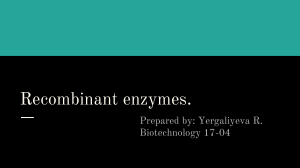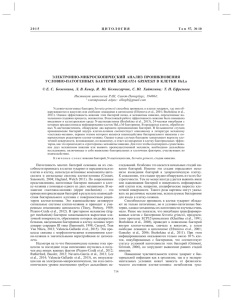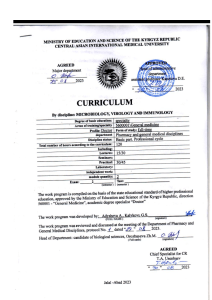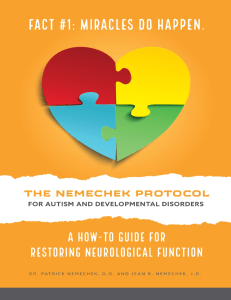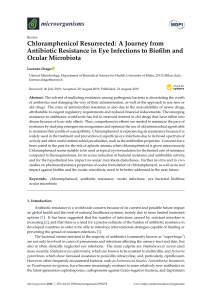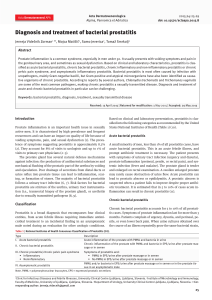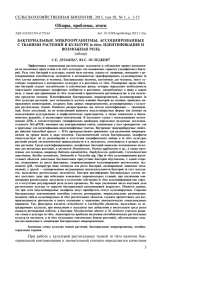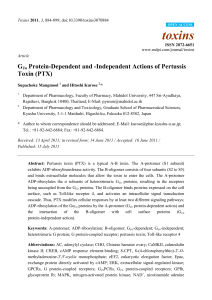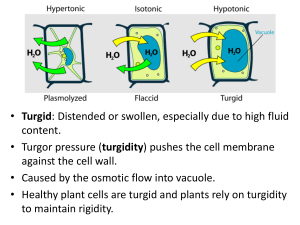Alkanal monooxygenase
реклама
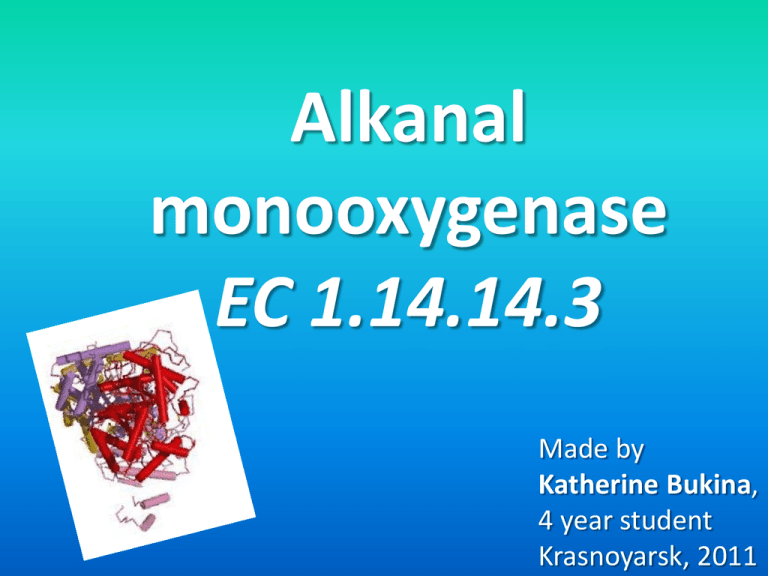
Аlkanal monooxygenase EC 1.14.14.3 Made by Katherine Bukina, 4 year student Krasnoyarsk, 2011 INTRODUCTION EC 1.14.14.3 Organism Vibrio harveyi 1. Oxidoreductases 1.14 Acting on paired donors, with O2 as oxidant and incorporation or reduction of oxygen. The oxygen incorporated need not be derived from O2 1.14.14 With reduced flavin or flavoprotein as one donor, and incorporation of one atom of oxygen into the other donor 1.14.14.3 Alkanal monooxygenase (FMN) Enzyme review EC 1.14.14.3 NAMES Accepted name: alkanal monooxygenase (FMN-linked) Vibrio fischeri luciferase aldehyde monooxygenase Other names: bacterial luciferase luciferase Systematic name: Enzyme review EC 1.14.14.3 alkanal,reduced-FMN:oxygen oxidoreductase (1-hydroxylating, luminescing) REACTION Enzyme review EC 1.14.14.3 REACTION STRUCTURE Люцифераза представляют собой αβ-гетеродимер, состоящий из двух гомологичных субъединиц (α и β), молекулярная масса которых соответственно 40 и 35 кДа. Изгибы α- и β-субъединиц очень похожи, оба принимают форму скрученного бочонка ([β/α]8). Две субъединицы связаны большой соприкасающейся поверхностью. Активный центр фермента расположен, главным образом, на αсубъединице. STRUCTURE Subunit A Subunit A Subunit B Subunit B LIGANDS AND METALS STATISTICS STATISTICS STATISTICS STATISTICS STATISTICS STATISTICS INTERESTING ARTICLES • Tu SC. Activity coupling and complex formation between bacterial luciferase and flavin reductases. Photochem Photobiol Sci. 2008 Feb;7(2):183-8. • Mark S. Waidmann Bacterial luciferase reporters The Swiss army knife of molecular biology Bioengineered Bugs 2:1, 8-16; January/February 2011; © 2011 Landes Bioscience • Yamasaki S, Yamada S, Takehara K. Inhibition of electrochemically controlled bioluminescence of bacterial luciferase by n-alkyl alcohols. Anal Sci. 2011;27(4):357. • Close DM, Hahn RE, Patterson SS, Baek SJ, Ripp SA, Sayler GS. Comparison of human optimized bacterial luciferase, firefly luciferase, and green fluorescent protein for continuous imaging of cell culture and animal models. J Biomed Opt. 2011 Apr;16(4):047003. SOURCES 1. http://www.rcsb.org 2. http://www.ncbi.nlm.nih.gov/pubmed 3. http://www.ebi.ac.uk 4. http://www.gopubmed.org A time to ask something! Questions? Thank you for your attention! Adieu

